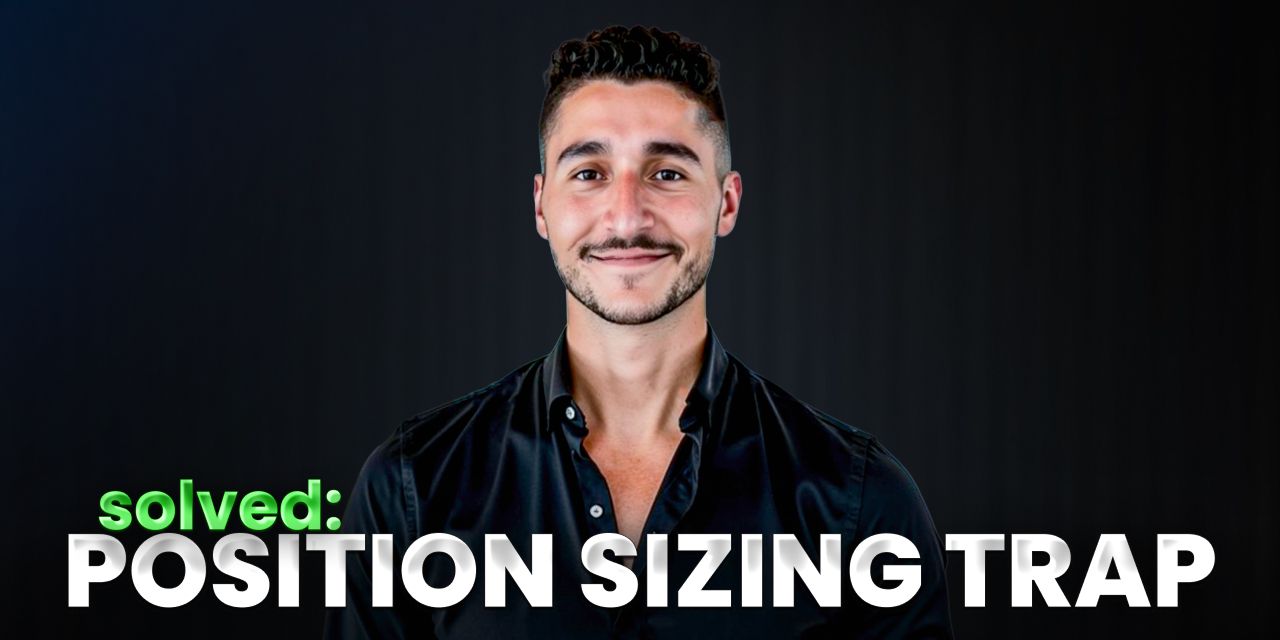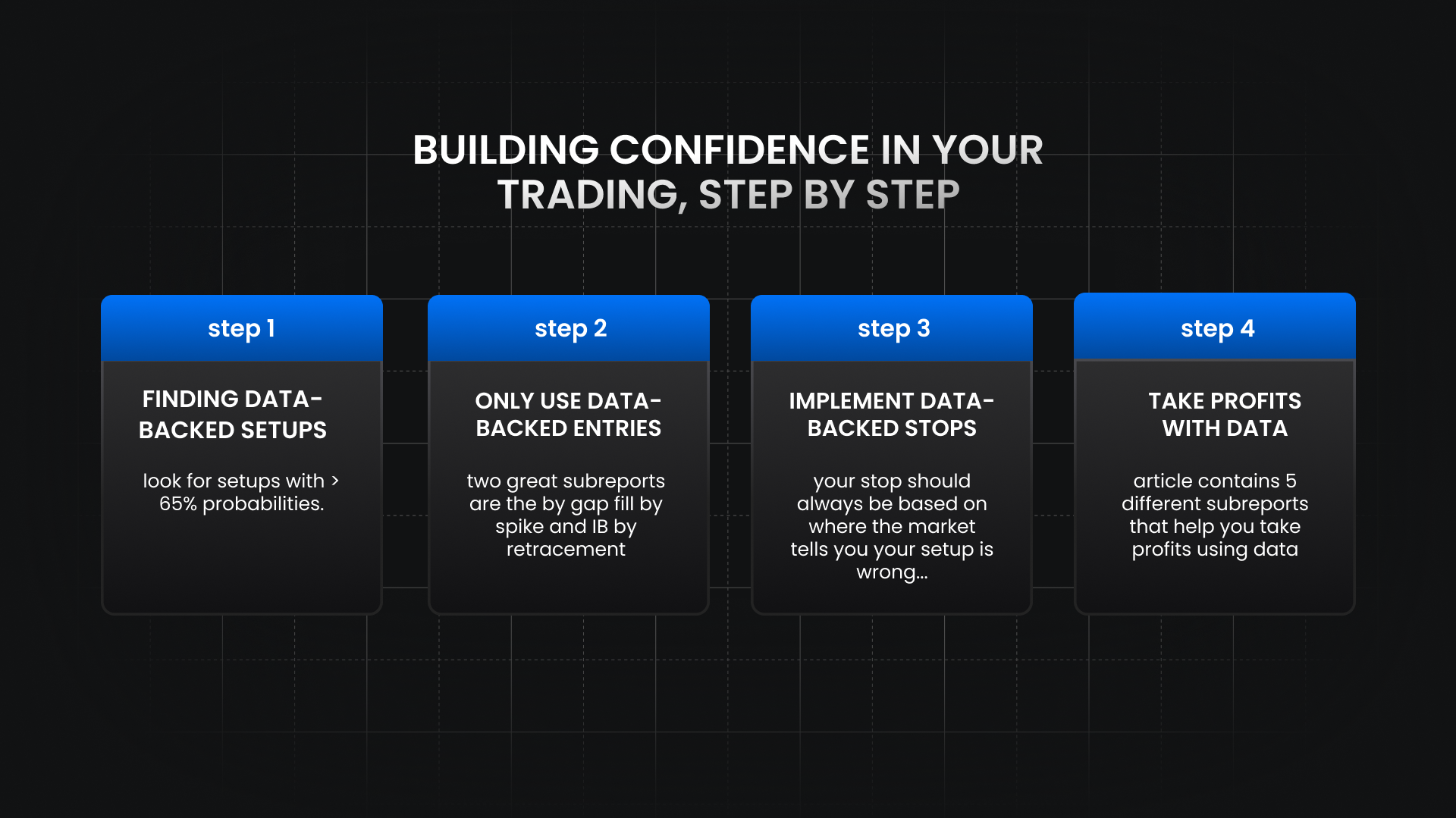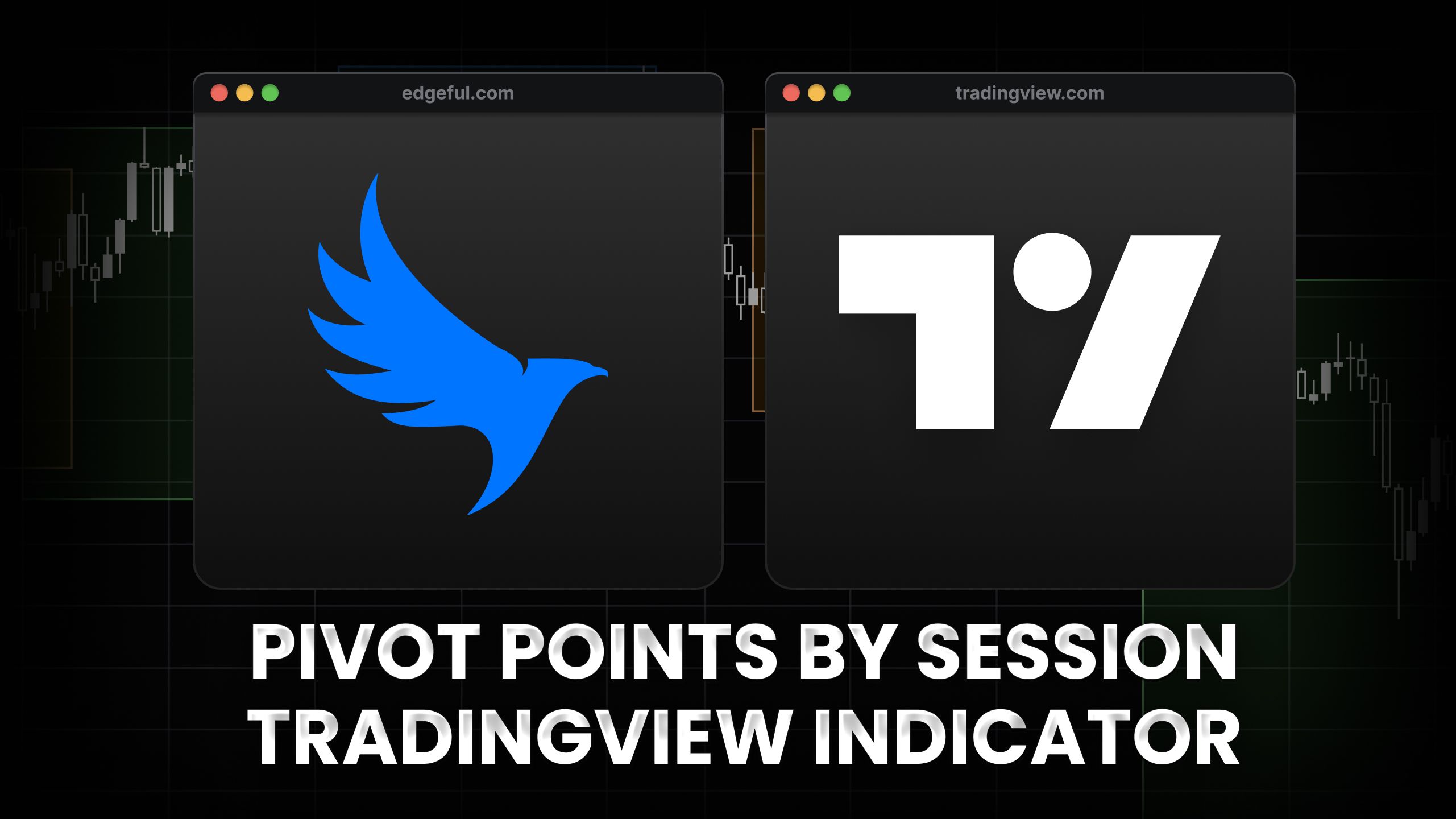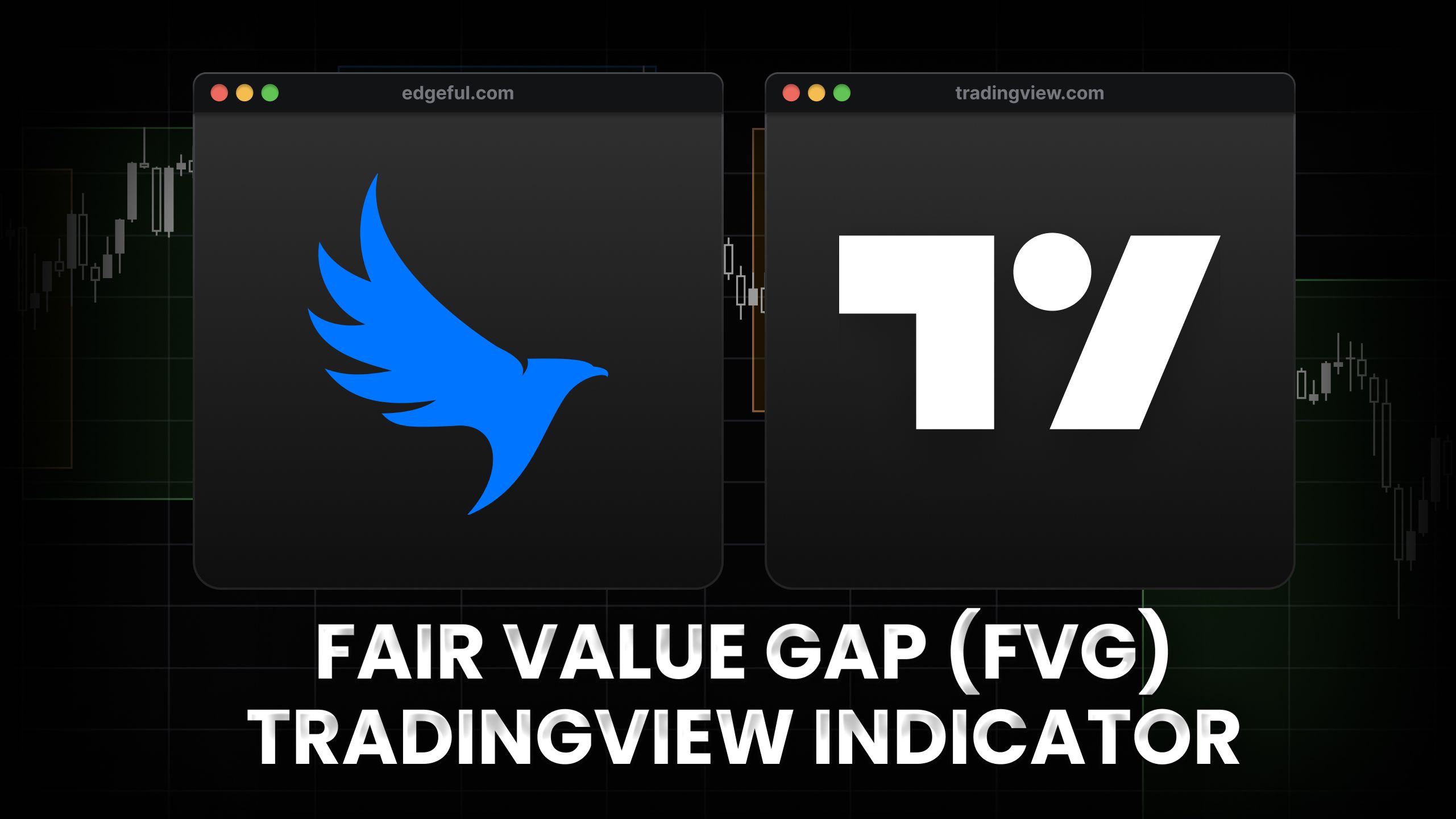position sizing in trading: the complete framework for 2025

you've probably done this before: three winning days in a row, feeling confident, so you double your position size... then boom, one loss wipes out everything.
position sizing in trading isn't just about how many contracts you take—it's the difference between surviving normal losing streaks and blowing up your account. after working with thousands of traders, I've seen more accounts destroyed by poor position sizing than by bad strategies.
in this guide, we're going to break down exactly how to size your positions based on your account type, risk tolerance, and strategy performance. you'll learn the frameworks that funded traders use, the math behind losing streaks, and the scaling rules that prevent you from sizing up right before your next loser hits.
table of contents
- why position sizing kills more accounts than bad strategies
- calculating your max risk per trade
- translating risk into actual contract size
- the three scaling frameworks that work
- tracking consecutive losses as your safety buffer
- the psychology of sizing up at the wrong time
- using data to remove emotion from sizing decisions
- frequently asked questions
- key takeaways
why position sizing kills more accounts than bad strategies
here's the scenario that destroys accounts every single day:
- day 1: +$100 (1 contract)
- day 2: +$100 (1 contract)
- day 3: +$100 (1 contract)
- day 4: "I'm on a streak, let's go 3 contracts"
- day 4 result: -$300
net result: $0 instead of +$200.
you just sized up right before your next loser. and this isn't bad luck—it's inevitable math that most traders don't understand when they're making position sizing decisions.

even strategies with 75% win rates have an 80% chance of seeing 3 consecutive losers within a 100-trade sequence. a 50% win rate strategy has nearly an 80% chance of losing 6 trades in a row.
but you probably didn't know this—which is why you size up at the end of a winning streak and blow your entire account during a normal losing streak, trying to "make it back."
that's the trap we're solving today with proper position sizing in trading.
the real cost of oversizing
let's do the math on what happens when you risk too much:
- if you risk 25% per trade, you're blown in 4 consecutive losses
- if you risk 50% per trade, you're blown in 2 consecutive losses
- if you risk 10% per trade, you can survive 10 consecutive losses
the goal isn't to never lose. the goal is to stay in the game long enough to capture the winners. that's the foundation of position sizing in trading.
calculating your max risk per trade
before you can determine proper position sizing in trading, you need to know your absolute maximum risk per trade. this changes based on whether you're trading personal capital or a prop firm evaluation.
for personal capital accounts
never risk more than 5-10% per trade.
- $10k account = $500-1000 max risk per trade
- $20k account = $1000-2000 max risk per trade
- $50k account = $2500-5000 max risk per trade
why does this matter for position sizing in trading? because you need room to survive the inevitable losing streaks. as we covered in our complete guide to the math behind consecutive losses, even great strategies have multiple consecutive losers.
for prop firm evaluations
different mindset here—think in terms of MAX DRAWDOWN, not account size, when determining your position sizing in trading.
- $5k max drawdown = risk $500 per trade (gives you 10 losses buffer)
- $10k max drawdown = risk $1000 per trade (gives you 10 losses buffer)
- $15k max drawdown = risk $1500 per trade (gives you 10 losses buffer)
why 10 losses as your buffer for position sizing in trading? because even great strategies can have 5-7 consecutive losers. you want margin for error.
translating risk into actual contract size
once you know your max risk per trade, you need to translate that into actual contract size. this is where position sizing in trading becomes practical.
NQ minis (1 contract = $20/point)
$1000 max risk = 50 point stop on 1 contract.
that's it, you're trading 1 contract. if your strategy typically uses 40-60 point stops, this position sizing in trading works perfectly.
MNQ micros (1 contract = $2/point)
$500 max risk = two options for position sizing in trading:
- option A: 250 point stop on 1 contract
- option B: 50 point stop on 5 contracts
adjust your position sizing in trading based on your strategy's typical stop size. if your strategy uses tighter stops (30-50 points), multiple micros make sense. if your strategy uses wider stops (100+ points), stick to 1-2 micros.
the key insight for position sizing in trading
your risk dictates your size. not your emotions, not your "feel", not your confidence level after 3 winners. the math decides for you. this removes the psychological component from position sizing in trading entirely.
example walkthrough of position sizing in trading
- you have a $10k personal account
- you decide on 5% risk = $500 per trade
- you're trading MNQ with a 50 point stop
- calculation: $500 ÷ (50 points × $2/point) = 5 contracts
- that's your position size, every single trade, no exceptions
this systematic approach to position sizing in trading removes all guesswork and emotional decision-making.
the three scaling frameworks that work
here's the honest truth: there's no perfect formula for when to scale up your position sizing in trading. I'm still figuring this out myself. but here are three approaches that work, and you need to pick one BEFORE you start trading.
option A: double your account before scaling
start with $10k, don't scale your position sizing in trading until you hit $20k.
pros:
- most conservative approach
- highest survival rate
- best for first prop eval
- removes temptation to scale too early
cons:
- slowest growth
- can feel frustrating when you're on a hot streak
- requires extreme patience
best for: risk-averse traders, anyone on their first funded account, traders who struggle with impulse control around position sizing in trading
option B: 50% growth before scaling
start with $10k, scale your position sizing in trading at $15k.
pros:
- balanced approach
- reasonable timeframe
- still very safe
- achievable target
cons:
- requires discipline to not scale at 30% or 40% growth
- still slower than most traders want
best for: most traders, good middle ground between safety and growth, those who understand position sizing in trading matters more than speed
option C: monthly review method
if profitable 3 months straight, increase position sizing in trading by 25-50%.
pros:
- requires proven consistency, not just luck
- time-based rather than account-size based
- focuses on sustainable performance
cons:
- takes longer to scale
- requires monthly discipline
- can miss opportunities during hot streaks
best for: experienced traders with proven track record, those who've already blown accounts from aggressive position sizing in trading
[Image placeholder: comparison table of three scaling methods showing pros/cons, timeframe to scale, risk level, and best trader type for each option]
the golden rule for position sizing in trading
be MORE patient than you think you need to be.
everyone wants to scale fast. everyone wants to "get back" losses by sizing up. everyone thinks "I'm hot right now, let me capitalize."
that's exactly how you blow up... and that's exactly why proper position sizing in trading requires removing emotion from scaling decisions.
personal note on scaling position sizing in trading
I've seen traders pass evals in 2 days, then blow funded accounts in 3 days. why? they sized up too fast. the math works, but the timing killed them.
the strategy was profitable. the win rate was high. but their approach to position sizing in trading—specifically when to scale—destroyed everything.
tracking consecutive losses as your safety buffer
even a 75% win rate strategy has losing streaks. you need to know what those look like in advance, not after you've blown your account. this is critical for proper position sizing in trading.
as we covered extensively in our guide to understanding consecutive loss math, losing streaks are not anomalies—they're statistical certainties.
how to calculate your position sizing buffer
step 1: download your backtest data (last 6 months minimum)
- if you're trading algos, export from TradingView
- if you're trading discretionary, track your last 50-100 trades manually
- this historical data informs your position sizing in trading decisions
step 2: find your max consecutive losses
- sort your trades chronologically
- look for the longest string of red trades in a row
- this is your historical worst-case scenario for position sizing in trading
step 3: add 2 more losses as safety buffer
- your backtest shows 3 consecutive losers max? plan for 5 in your position sizing
- your backtest shows 5 consecutive losers max? plan for 7 in your position sizing
- why? because your worst losing streak is always in your future, not your past
step 4: ensure your position sizing allows for that many losses
- if you're planning for 5 consecutive losses at $500/trade, you need $2,500 drawdown buffer minimum
- this keeps you in the game when the inevitable streak hits
- this is where most traders fail at position sizing in trading—they don't plan for worst-case
real example of position sizing with consecutive loss data
ORB algo on NQ, last 12 months:
- max consecutive losses: 2
- safety buffer: plan for 4
- risk per trade: $500
- required drawdown buffer: $2,000
if you have a $5k drawdown limit, you're safe. if you have a $2k drawdown limit, you need to reduce risk per trade to $400.
this is how data-driven position sizing in trading actually works—you use historical performance to inform future risk parameters.

the psychology of sizing up at the wrong time
this is where most traders sabotage their position sizing in trading, so let's break down the mental trap.
the trap
you have a winning day on your first eval. you made $100 with 1-2 micros. you watch price continue to run after you close.
thought: "if I had sized up, I'd have made $500 instead of $100"
next day: you increase your position sizing in trading to 3 contracts.
the reality check
if you had sized up and WON, yes, you'd have made $500. but if you had sized up and LOST (which happens 25-40% of the time even with good strategies), you'd be down $500 instead of $100.
that one loss would have wiped out 5 days of wins.
this is why emotion-based position sizing in trading destroys accounts.
the math that saves accounts
scenario A (patient position sizing):
- 3 wins at 1 contract = +$300
- 1 loss at 1 contract = -$100
- net: +$200
scenario B (aggressive position sizing):
- 3 wins at 1 contract = +$300
- size up to 3 contracts for trade 4
- 1 loss at 3 contracts = -$300
- net: $0
the mindset shift for position sizing in trading
accepting smaller wins protects you from bigger losses. slow growth compounds over time. fast growth explodes (your account).
every funded trader who's lasted more than 6 months understands this fundamental principle of position sizing in trading.
the honest truth
it SUCKS watching a winner run and knowing you could have made more. it feels even worse when you're "right" but your position sizing in trading was too conservative.
but you know what feels infinitely worse? being right 7 times in a row, wrong once with massive size, and blowing your account.
that's the difference between understanding position sizing in trading intellectually versus emotionally.
your scaling checklist (use this before you increase size)
before you increase your position sizing in trading, ask yourself these 4 questions. if you answer "no" or "I don't know" to ANY of them, don't scale yet.
question 1: have I hit my scaling threshold?
- did I double my account? (if using option A)
- did I grow 50%? (if using option B)
- have I been profitable 3+ months straight? (if using option C)
if no = don't scale your position sizing in trading, keep grinding at current size.
question 2: can I survive my worst-case scenario?
if I take 5 consecutive losses at this new position sizing in trading, am I still in the game?
do the math: new risk × 5 losses = total drawdown.
if that number exceeds your max drawdown, you can't scale your position sizing yet. it's not about whether you THINK you'll take 5 losses—it's about whether you CAN survive them.
question 3: am I sizing up emotionally or mathematically?
emotional position sizing:
- "I'm feeling confident after these wins"
- "I need to make back yesterday's loss"
- "I'm hot right now"
mathematical position sizing:
- "I hit my pre-defined threshold of $20k"
- "my account grew 50%, time to scale"
- "I've been profitable for 3 consecutive months"
if you're feeling anything (excitement, revenge, FOMO), wait. emotion-based position sizing in trading destroys accounts.
question 4: what's my actual performance, not my best day?
don't scale your position sizing in trading based on your best week. don't scale based on that one day you made $800.
scale based on your average consistent daily/weekly performance.
if your average winning day is $150, scaling up won't turn it into $1500. it'll turn your $150 winners into occasional $300-400 winners and your $100 losers into $300-500 account killers.
[Image placeholder: decision tree flowchart showing the 4 questions and yes/no paths leading to either "scale position sizing" or "maintain current size"]
the final check
write down your answers to all 4 questions. if you hesitated on even one, don't scale your position sizing in trading.
patience here is the difference between funded traders and blown accounts.
using data to remove emotion from sizing decisions
this entire framework for position sizing in trading becomes a lot easier when you have data backing your decisions.
when you're using data-driven platforms
you can see exactly how many consecutive losses to expect (it's in the backtest data). you can test different position sizing scenarios before risking real money. you can optimize your risk per contract based on historical drawdown. you remove the "feel" and replace it with facts.
this is the advantage of data-driven position sizing in trading.
example of data-driven position sizing
you download the ORB algo backtest for NQ, last 6 months:
- you see: max consecutive losses = 3
- you see: max drawdown on any single trade = $1,200
- you now know: plan for 5 consecutive losses, risk $500/trade max
- decision made about position sizing in trading, no emotion involved
if you're trading discretionary
track your last 50 trades in a spreadsheet:
- calculate your longest losing streak
- calculate your largest single loss
- use those numbers to set your position sizing parameters
- same process, just manual
the point is that data removes doubt. when you KNOW your strategy has 3 max consecutive losses historically, and you KNOW you can survive 5+ with your current position sizing in trading, you don't panic when you hit 2 losers in a row.
you trust the process because the math says you're safe.
this is exactly what we teach in our comprehensive risk management framework, which covers the 9 rules that separate profitable traders from everyone else—with position sizing in trading being rule #1.
frequently asked questions
what is position sizing in trading?
position sizing in trading is the process of determining how many contracts, shares, or lots to trade on each setup based on your account size, risk tolerance, and strategy performance. proper position sizing ensures you can survive normal losing streaks while maximizing growth during winning periods.
how much should I risk per trade?
for personal accounts, risk 5-10% maximum per trade. for prop firm evaluations, calculate based on max drawdown—typically $500-1000 per trade depending on your drawdown limit. the key is ensuring you can survive 5-7 consecutive losses, which even high-probability strategies experience.
when should I increase my position size?
increase position sizing in trading only after hitting pre-defined milestones: either doubling your account, achieving 50% growth, or maintaining profitability for 3+ consecutive months. never scale up based on emotions, winning streaks, or the desire to "make back" losses faster.
how do I calculate position size for futures contracts?
divide your max risk per trade by (your stop loss in points × point value). for example: $500 max risk ÷ (50 point stop × $2 per point for MNQ) = 5 micro contracts. this mathematical approach removes emotion from position sizing decisions.
what's the biggest mistake traders make with position sizing?
the biggest mistake is sizing up after a winning streak right before the inevitable losing streak hits. even strategies with 75% win rates have an 80% chance of experiencing 3 consecutive losses. traders who don't account for this in their position sizing blow up profitable strategies.
how do I know if my position sizing is too aggressive?
calculate how many consecutive losses would blow your account or violate your max drawdown. if you can't survive at least 7-10 consecutive losses at your current position size, you're too aggressive. remember: even great strategies have 5-7 consecutive losers.
key takeaways
position sizing in trading isn't sexy, but it's what keeps you alive and profitable. here's what you need to remember:
- calculate your max risk first: 5-10% for personal accounts, based on max drawdown for prop firms
- translate risk into contracts mathematically: remove all emotion from the calculation
- pick your scaling rule and stick to it: option A (double account), option B (50% growth), or option C (3 months profitable)
- track consecutive losses: add 2 more losses to your historical max as a safety buffer
- use the 4-question checklist: before every size increase, verify you've hit thresholds mathematically, not emotionally
- leverage data over feelings: backtest data tells you exactly how many consecutive losses to expect
- be more patient than you think: slow growth compounds, fast growth explodes
the fastest way to blow an account isn't a bad strategy—it's aggressive position sizing in trading that doesn't account for normal variance.
start trading with proper position sizing today
if you're serious about implementing data-driven position sizing in trading, you need access to historical performance data for your strategies. that's where most traders fail—they don't have the statistics to make informed sizing decisions.
our platform provides detailed backtest data on 100+ trading strategies, showing you exact win rates, consecutive loss patterns, and optimal position sizing parameters for every setup. you can see which strategies can handle aggressive sizing and which require more conservative approaches.
thousands of traders use our data to make smarter position sizing decisions every single day. stop guessing with your position size and start using probability-backed frameworks that keep you in the game.
get our complete trading strategies and position sizing frameworks delivered to your inbox every Saturday morning. sign up for free here.


